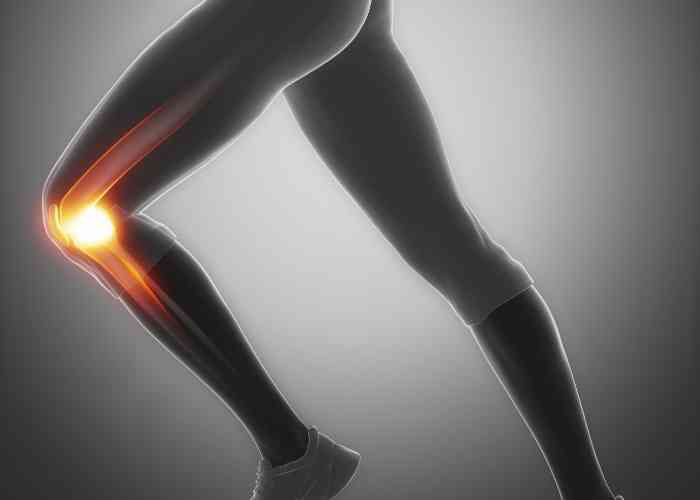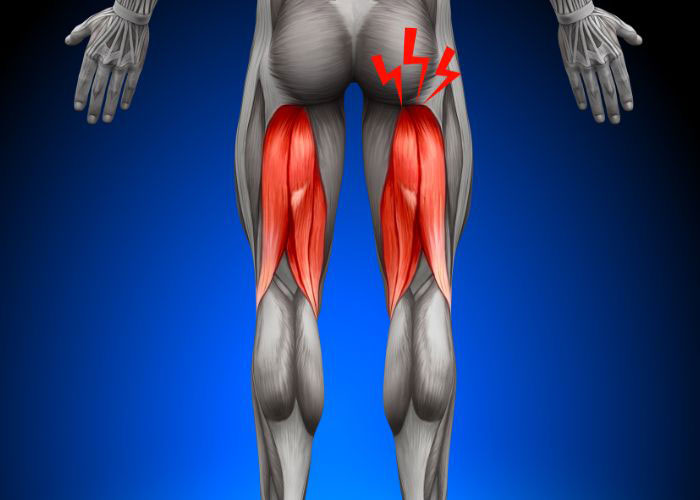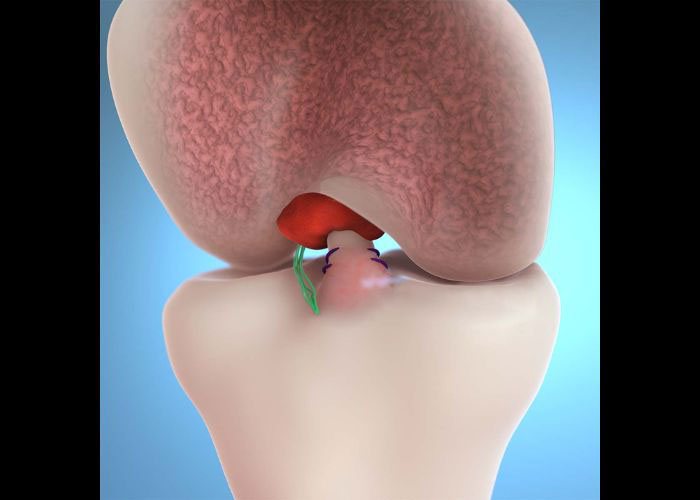What is a medial patellofemoral ligament injury in the knee?
The medial patellofemoral ligament (MPFL) is one of the elastic-like tissue bands in the knee joint’s elaborate soft-tissue network. This ligament connects the patella (kneecap) to the lower end of the femur (thigh bone). Similar to a strong rubber band, the primary responsibility of the MPFL is to stabilize the kneecap by preventing it from moving outside of the knee. An injury to the knee can disrupt the MPFL structure resulting in a partial or complete ligament tear. Athletes that perform pivoting motions in sports such as tennis, football, and basketball have the highest likelihood of experiencing an MPFL injury. Although, non-athletic individuals with weakened leg muscles or an underlying knee condition can also experience an MPFL injury.

What is the treatment for a medial patellofemoral ligament injury?
Individuals with minimal patellar dislocation, normal patellar height at the time of injury, or those who did not sustain any additional knee injuries may respond well to non-surgical treatment measures alone. Some non-surgical therapy recommendations include limiting or avoiding weight-bearing, application of a knee brace for joint stabilization, rest, ice, and non-steroidal anti-inflammatory medications (NSAIDs). However, in the event of failed conservative or non-surgical therapy or a complete rupture of the medial patellofemoral ligament (MPFL), surgical intervention may be required to restabilize the patella and knee joint. The MPFL is reconstructed with a tendon graft, either from the patient (autograft) or donor tissue (allograft). Donor tissue grafts are typically preferred as they have been shown to provide more favorable recovery outcomes. Dr. Ronak Mukesh Patel, orthopedic knee doctor, treats patients in Sugar Land, Pearland, and the Houston, Texas area, who have experienced a medial patellofemoral ligament injury and are in need of surgical reconstruction.
How is medial patellofemoral ligament reconstruction performed?
Dr. Patel typically performs an arthroscopic-assisted reconstruction of the medial patellofemoral ligament (MPFL) as an outpatient procedure. This minimally invasive surgical approach involves a small camera (arthroscope) and specialized surgical instruments to complete the necessary repairs. To begin, a nerve block is frequently administered for anesthesia. The tissue graft that will be used for ligament reconstruction is harvested from the patient or thawed from the donor, as previously determined by Dr. Patel. When this tissue has been acquired, several small incisions are created surrounding the knee joint. The arthroscope is introduced through a portal for Dr. Patel to methodically examine the knee and patellofemoral joint. The specialized surgical instruments are then inserted to excise and remove any damaged tissue fragments. To accommodate the new ligament, small surgical anchors are fastened to the patella and secured in the distal femur. It is crucial that this new ligament be situated as close to the native tissue as possible for the best recovery outcome. The new ligament is fastened to the surgical anchors on the patella and attached to the femur where it is secured in place. The new ligament is then evaluated for good tension and stability. Once Dr. Patel confirms proper ligament attachment, the arthroscope and specialized surgical instruments are removed, and the incisions are closed with steri-strips or sutures.
What is the recovery period like after MPFL reconstruction?
The complexity and/or severity of the injury and the type of tissue graft implemented largely determine the recovery period following surgical reconstruction of the medial patellofemoral ligament (MPFL). Most patients can expect a full recovery with a return to normal daily activities in approximately 4 to 5 months. The recovery process is also greatly affected by a patient’s willingness to comply with the post-operative care instructions provided by Dr. Patel. Below are some of the things that can be anticipated by patients in the Sugar Land, Pearland, and Houston, Texas area:
- Knee joint immobilization with a brace or other device immediately following surgery.
- Assisted weight-bearing with crutches, as tolerated, for approximately 6 weeks.
- Elevating the knee joint and applying ice are important during the first 48 hours after surgery. Most patients continue to ice and elevate in addition to non-steroidal anti-inflammatory medications (NSAIDs) for pain management.
- A post-operative evaluation to assess the MPFL will be completed by Dr. Patel 6 weeks after surgery. A physical rehabilitation program tailored to Dr. Patel’s post-op assessment typically begins at this time. Active participation and completion of this physical therapy program is the key to a successful recovery.
MPFL Reconstruction Doctor

If the MPFL in the knee has been completely torn or damaged, reconstruction may help restore the stability of the knee. MPFL reconstruction is most successful when using a donor graft, or allograft. MPFL surgeon, Doctor Ronak Mukesh Patel, has extensive experience in knee ligament reconstruction for patients in Houston, Sugar Land, and Pearland, TX who need knee surgery due to an injury or MPFL tear. Contact Dr. Patel’s team today!








